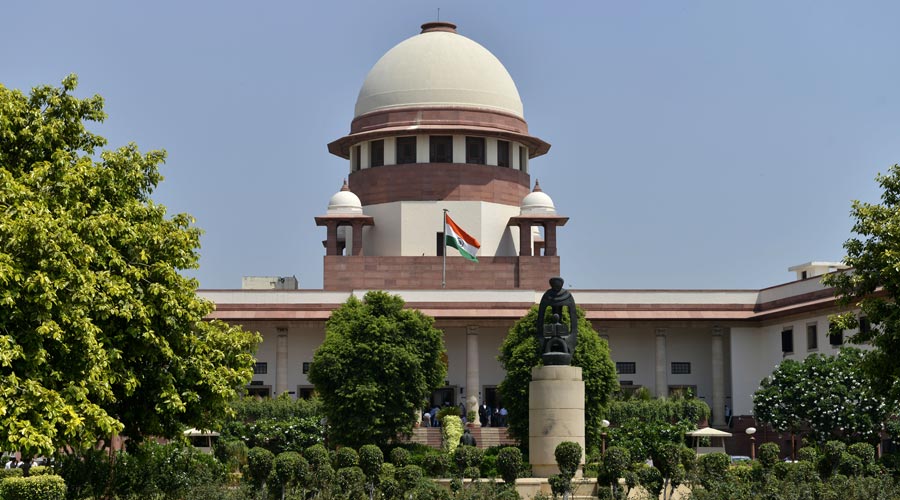The Supreme Court has asked the constitutional courts to structure their verdicts in a litigant-friendly language, saying "the purpose of judicial writing is not to confuse or confound the reader behind the veneer of complex language".
The top court said "many judgments do decide complex questions of law and of fact. Brevity is an unwitting victim of an overburdened judiciary. It is also becoming a victim of the cut-copy-paste convenience afforded by software developers".
It said citizens, researchers and journalists continuously evaluate the work of the courts as public institutions committed to governance under law and judgment writing is hence a critical instrument in fostering the rule of law and curbing rules by the law.
The top court, which was dealing with a Himachal Pradesh High Court verdict, said it is "incomprehensible" and the court found it difficult to navigate through the "maze of incomprehensible language in the decision".
A bench of justices DY Chandrachud and AS Bopanna, in a verdict last week, laid down the principles to be adopted by the constitutional courts while writing judgments, including in complex matters.
The judgment pronounced by the bench on August 16 was uploaded on the apex court's website on Wednesday.
The bench passed the verdict on an appeal filed by the State Bank of India and others in a matter arising out of disciplinary action against an employee.
The top court had last year stayed the high court order and said no coercive action should be taken against the bank and others in accordance with the award of the Central Government Industrial Tribunal (CGIT).
It said, "The judgment of the division bench of the High Court of Himachal Pradesh is incomprehensible. This court, in appeal, found it difficult to navigate through the maze of incomprehensible language in the decision of the high court. A litigant for whom the judgment is primarily meant would be placed in an even more difficult position. Untrained in the law, the litigant is confronted with language which is not heard, written or spoken in contemporary expression."
It said judgments of the high courts and the Supreme Court also serve as precedents to guide future benches and a judgment must make sense to those whose lives and affairs are affected by the outcome of the case.
"The purpose of judicial writing is not to confuse or confound the reader behind the veneer of complex language. The judge must write to provide an easy-to-understand analysis of the issues of law and fact which arise for decision. Judgments are primarily meant for those whose cases are decided by judges. Confidence in the judicial process is predicated on the trust which its written word generates. If the meaning of the written word is lost in language, the ability of the adjudicator to retain the trust of the reader is severely eroded," the bench said.
The top court remanded the case back to the high court to be considered afresh and noted that earlier also, it had remanded matters to the Himachal Pradesh High Court due to similar judgments "so that orders could be passed afresh in language which is capable of being understood".
The top court said amidst an overburdened judicial docket, a view is sometimes voiced that the parties are concerned with the outcome and little else.
"This view proceeds on the basis that parties value the outcome and not the reasoning which constitutes the foundation. This view undervalues the importance of the judicial function and of the reasons which are critical to it. The work of a judge cannot be reduced to a statistic about the disposal of a case. Every judgment is an incremental step towards consolidation and change," it said.
The apex court added that adhering to precedent, the judgment reflects a commitment to protecting legal principles and this imparts certainty to the law.
"Each judgment is hence a brick in the consolidation of the fundamental precepts on which a legal order is based. But in incremental steps, a judgment addresses the need to evolve and to transform by addressing critical issues which confront human existence. Courts are as much engaged in the slow yet not so silent process of bringing about a social transformation. How good or deficient they are in that quest is tested by the quality of the reasons as much as by the manner in which the judicial process is structured," it said.
It further stated that a judgment culminates in a conclusion but its content represents the basis for the conclusion and a judgment is hence a manifestation of reason.
"The reasons provide the basis of the view which the decision-maker has espoused, of the balances which have been drawn. That is why reasons are crucial to the legitimacy of a judge's work. They provide an insight into judicial analysis, explaining to the reader why what is written has been written. The reasons, as much as the final conclusion, are open to scrutiny," it said.
The top court emphasised that a judgment is written primarily for the parties in a forensic contest and the scrutiny is first and foremost done by the person for whom the decision is meant.










